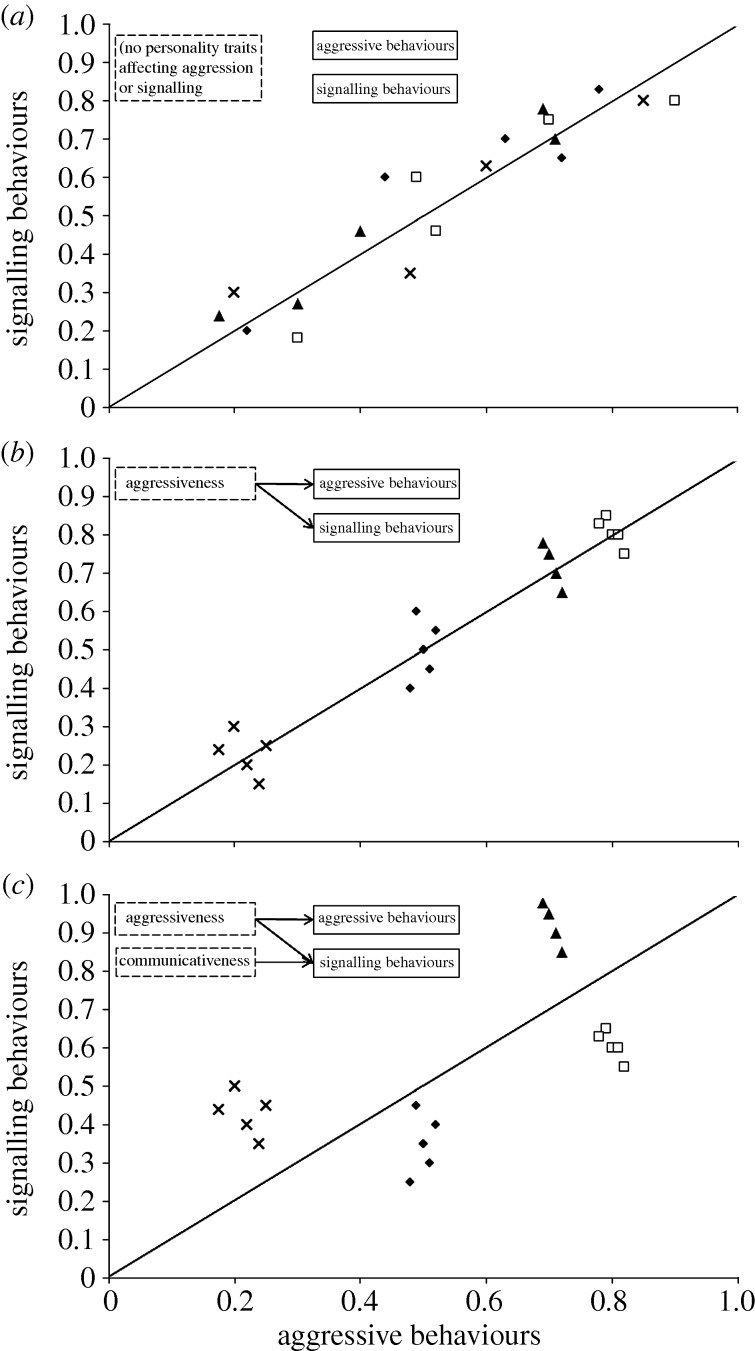Figure 1.
Three hypotheses on the relationship between personality traits (dashed boxes) and aggressive behaviours and signalling (solid boxes). The hypotheses are illustrated in the respective scatterplots of four hypothetical individuals marked by the different symbols. The diagonal line is x = y and is meant to illustrate a hypothetical relationship between signalling and aggression. (a) Represents the null hypothesis that there is no personality trait influencing aggressive behaviour or signalling behaviours, although these two are correlated with each other (i.e. signalling is honest). (b) Represents the first alternative hypothesis where aggressive and signalling behaviours are influenced by a single personality trait, aggressiveness. In this hypothesis, residual variation in signalling behaviours once aggressive behaviours are taken into account is not individually consistent. (c) Represents the second alternative hypothesis where signalling levels are influenced not only by aggressiveness but also by a second personality trait which we term communicativeness. The presence of the second personality factor is inferred from whether the residual variation in signalling levels—once aggressiveness is controlled for—is repeatable.

